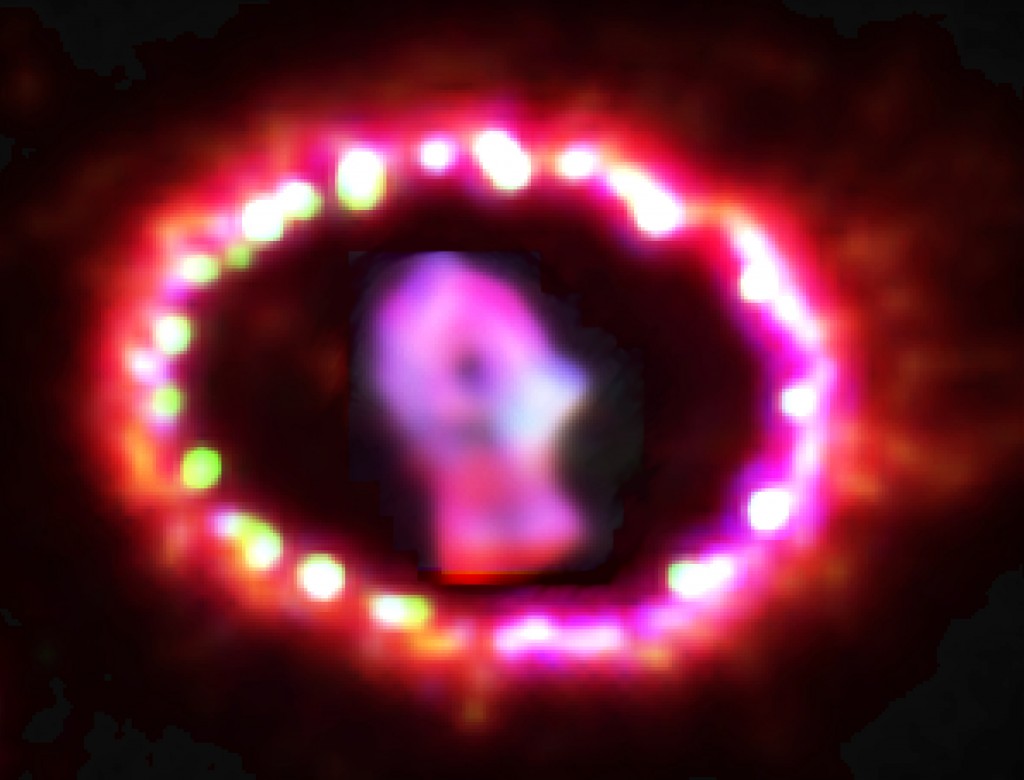In 1987, light from an exploding star in the Large Magellanic Cloud reached Earth. Supernova 1987A was the closest supernova explosion anyone had seen in almost 400 years. Astronomers have studied it closely, watching the debris fade over the years, but on June 8, 2011 a team of astronomers led by Josefin Larsson, University of Stockholm, announced that the supernova debris – which has faded over the years – is brightening. This brightening marks the transition from a supernova to a supernova remnant. Their research appears in the June 9, 2011 issue of Nature.
Robert Kirshner of the Harvard-Smithsonian Center for Astrophysics (CfA) – who leads a long-term study of this supernova with NASA’s Hubble Space Telescope – said:
Supernova 1987A has become the youngest supernova remnant visible to us.

As shown in the image above, SN 1987A is surrounded by a ring of material that astronomers say blew off the progenitor star thousands of years before it exploded. That ring is about one light-year (6 trillion miles) across. Inside that ring, the “guts” of the star – released in the supernova explosion seen from Earthin 1987 – are rushing outward in an expanding debris cloud.
Most of a supernova’s light comes from radioactive decay of elements created in the explosion. As a result, it fades over time. However, the brightening debris from SN 1987A suggests that a new power source is lighting it.
In other words, the debris of SN 1987A is beginning to impact the surrounding ring, creating powerful shock waves that generate X-rays observed with NASA’s Chandra X-ray Observatory. Those X-rays are illuminating the supernova debris, and shock heating is making it glow. The same process powers well-known supernova remnants in our galaxy like Cassiopeia A.
Because it’s so young, the remnant of SN 1987A still shows the history of the last few thousand years of the star’s life recorded in the knots and whorls of gas. By studying it further, astronomers may be able to decode that history. Kirshner said:
Young supernova remnants have personality.
Eventually, that history will be lost when the bulk of the expanding stellar debris hits the surrounding ring and shreds it. Until then, SN 1987A continues to offer an unprecedented opportunity to watch a cosmic object change over the course of a human lifetime. Few other objects in the sky evolve on such short time-scales.
Bottom line: A team of astronomers led by Josefin Larsson, University of Stockholm, announced on June 8, 2011 that the debris of Supernova 1987A (SN 1987A) is brightening – indicating that a different power source has begun to light the debris and marking the transition from a supernova to a supernova remnant. Research by the astronomers appears in the June 9, 2011 issue of Nature.
Via Harvard-Smithsonian Center for Astrophysics
Legendary exploding star helps reveal secret of supernova origins











